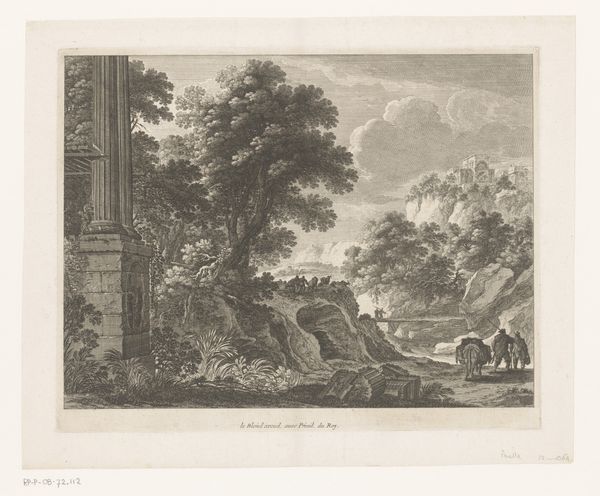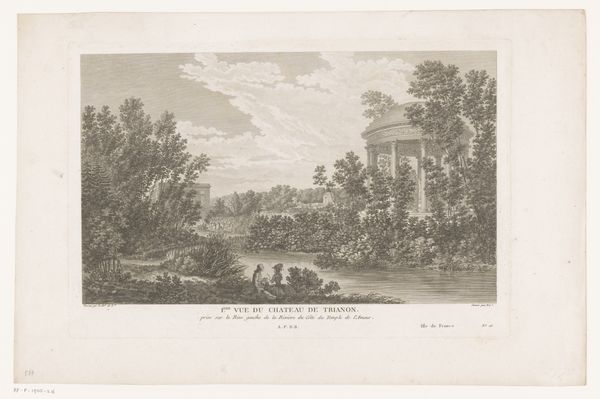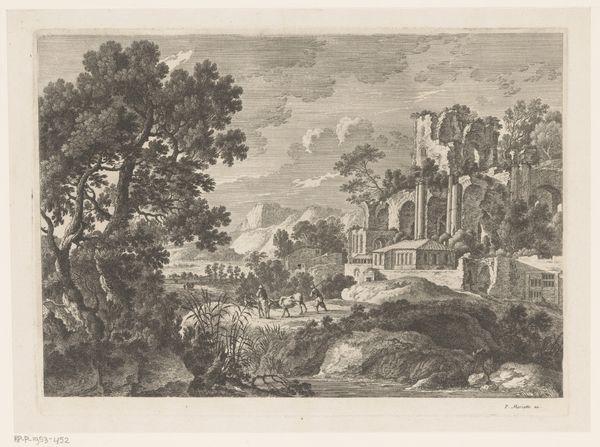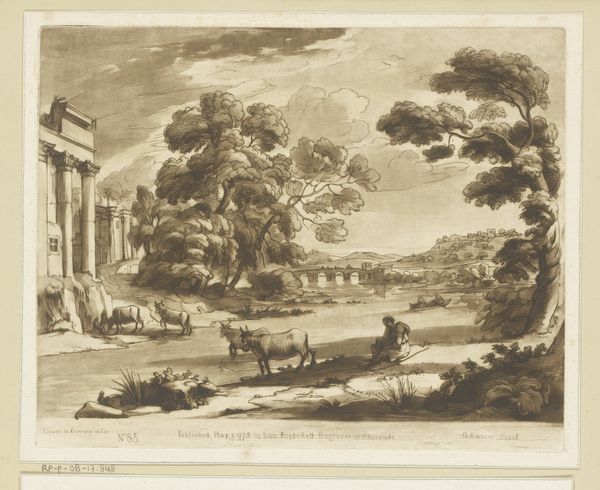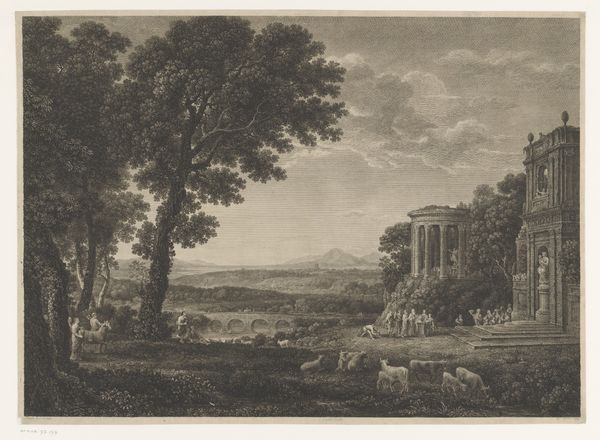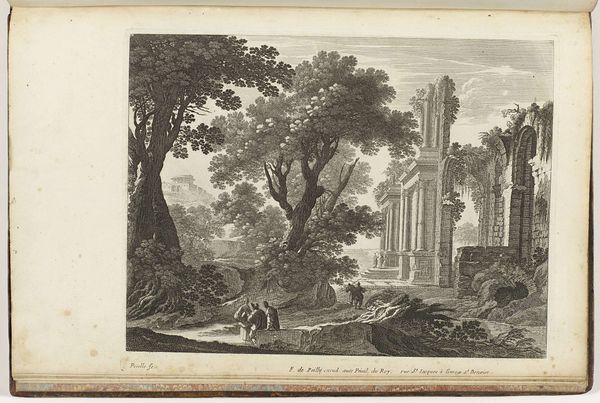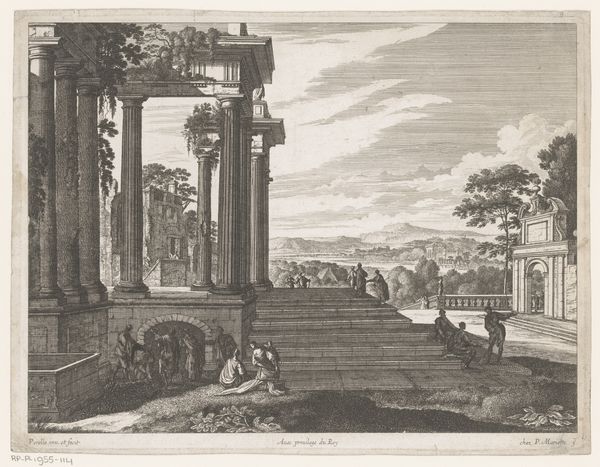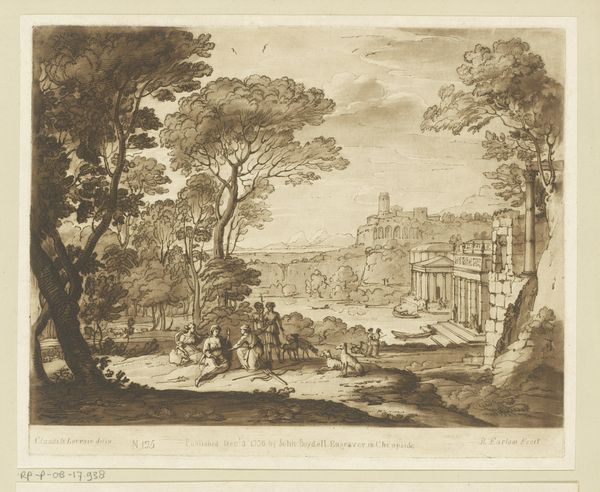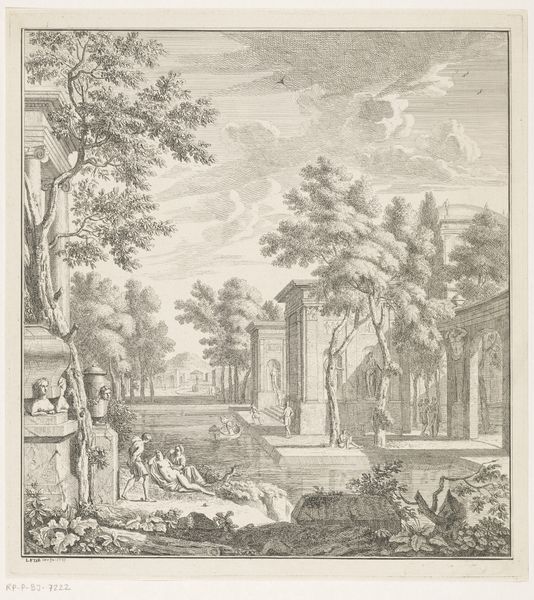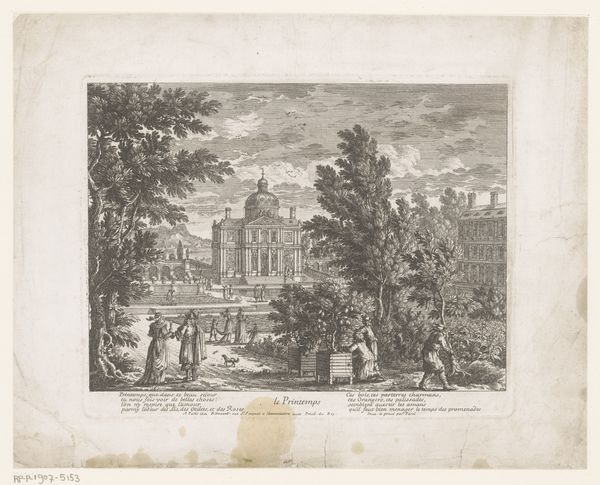
print, engraving, architecture
#
baroque
# print
#
old engraving style
#
landscape
#
figuration
#
cityscape
#
history-painting
#
engraving
#
architecture
Dimensions: height 182 mm, width 228 mm
Copyright: Rijks Museum: Open Domain
Editor: We’re looking at Nicolas Perelle's "River Landscape with Antique Temples," created sometime between 1613 and 1695. It's an engraving, full of intricate detail, but it has a somewhat detached, almost theatrical feel. What do you see when you look at this print? Curator: This engraving presents us with a fascinating example of how the past was imagined and consumed in Perelle's time. The idealized antique architecture, the staged figures… It’s less about historical accuracy and more about constructing a vision of the classical world that reinforced certain social and political ideals. Notice how the architectural ruins dominate the composition and what statements they try to convey about power through association to empires? Editor: So, the artist wasn't necessarily trying to show us what an actual river landscape with Roman ruins looked like? Curator: Precisely. Think about who would have been purchasing and displaying these prints. These idealized landscapes, mass produced by engravings, allowed those individuals to visually assert a connection to a glorious, often romanticized past. It created a narrative of continuity, a way for the present to legitimize itself by linking to a perceived golden age. Editor: It’s interesting how art can be used to shape people's perception of history. It almost makes the landscape itself a political statement. Curator: Exactly. And consider the role of institutions like the Rijksmuseum in preserving and displaying this work. What narratives are we perpetuating by keeping these prints in circulation? Are we consciously engaging with the politics embedded within them? Editor: I never really considered the way displaying the work plays an active part. Thanks for highlighting those complexities! Curator: Of course! It is important to understand the historical narratives of artworks so that new, inclusive perspectives and displays can be achieved.
Comments
No comments
Be the first to comment and join the conversation on the ultimate creative platform.


